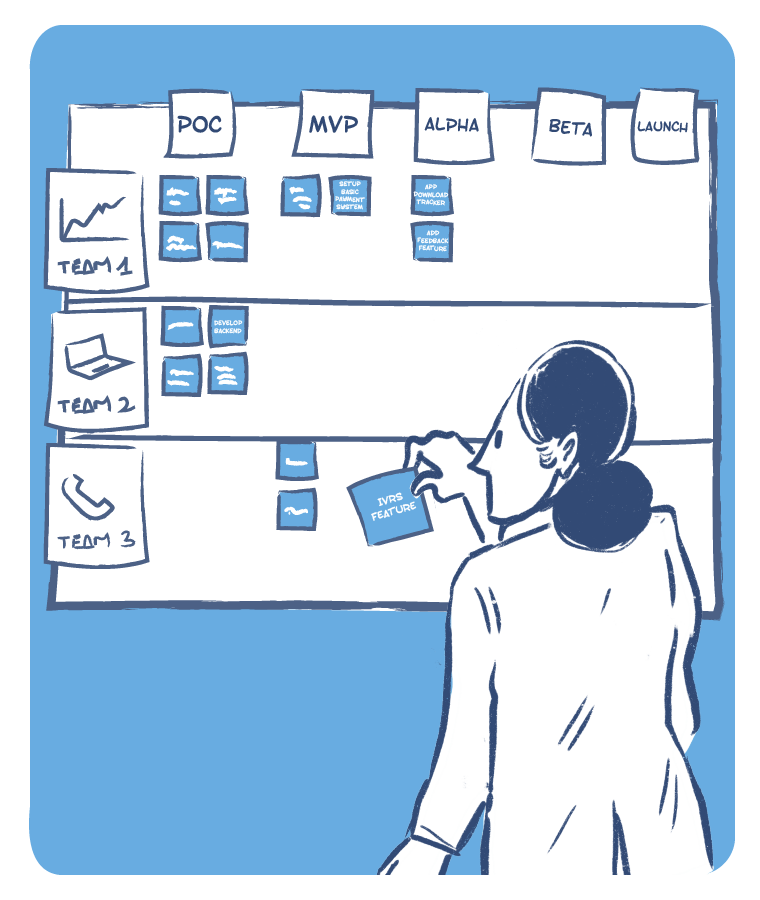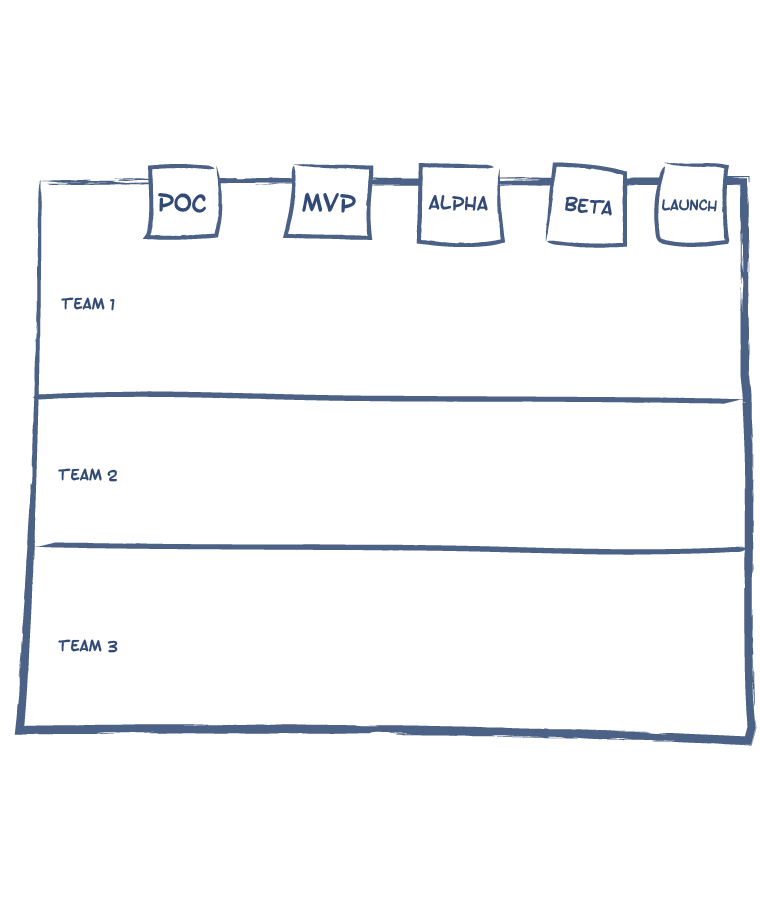STRATEGY, INNOVATION & IMPACT | VISION BUILDING
Product Roadmap
60-90 Min
Roadmapping is an important step of clarifying the direction of a startup or programme over the next few weeks, and months. It helps teams align on their priorities and challenges moving forward.
USE CASES
- Build consensus on a company's or programme's strategic direction.
- Identify key milestones, and responsibilities for each team.
- Formulate an actionable plan for teams to work towards.
LIMITATIONS
Teams may be reluctant to get into details of their internal plans in front of a larger workshop audience.

